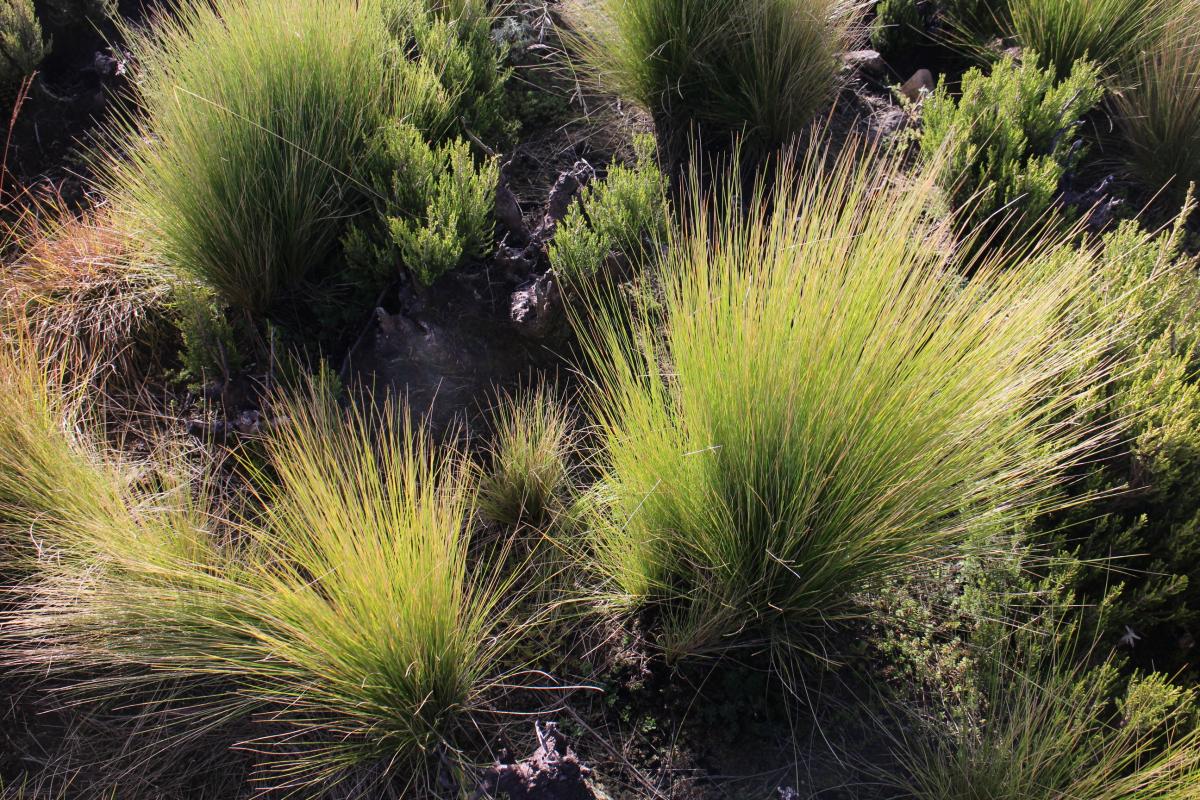Dynamic governance model in Ethiopia's Central Highlands
The Guassa area in Central Highlands of Ethiopia is an excellent example of a dynamic “indigenous community conserved area” (ICCA). IUCN’s Global Protected Areas Programme participated in the first regional meeting of the ICCA Consortium in Africa, held outside Bishoftu, close to the shores of the Bishoftu Guda Lake. During the event, the governance aspects of the Guassa conservation model rooted in the local Qero system were presented, and a field trip to visit the site was organised.
In November 2018, the Global Protected Areas Programme visited Ethiopia to attend the first regional meeting of the ICCA Consortium in Africa. The event was held just outside Bishoftu close to the shores of the Bishoftu Guda Lake. During the event, the governance aspects of the Guassa conservation model rooted in the local Qero system were presented, and a field trip to visit the site was organised. This is an excellent example of a dynamic “ICCA” the abbreviation for “territories and areas conserved by indigenous peoples and local communities” or “territories of life”. This is when a close association is found between a specific indigenous people or local community and a specific territory, area, or body of natural resource, which is combined with effective local governance and the conservation of nature.
The Guassa area of Menz is found in the Central Highlands of Ethiopia and comprises a large expanse (more than 11,000 hectares) of Afro-alpine moorland at an altitude above 3200 m. The area has existed in its current, semi-pristine state for hundreds of years, with a governance system that dates back to the 17th century. It was set aside by locals as the area to harvest Festuca grasses, used for thatching roofs. It also is considered as a “last reserve” pasture should a drought hit the lowlands. The access to Guassa’s resources was always restricted to a limited number of users during limited time periods, and the relevant rules were enforced through an indigenous institution, known as Qero System, which the locals unanimously adopted. The Qero system entailed the closure of the Guassa area from any type of use from three to five consecutive years, depending upon the growth of the grasses, with the prohibition strictly enforced by the users themselves (regular patrols, severe punishment, etc.). In the early 1970s, the socialist revolutionary government of Ethiopia proclaimed the nationalization of all rural land and abolished all feudal systems including Qero. The communities, however, adapted to the new regime and formed a new “Guassa Conservation Council” comprised of eight peasant associations, with the main function to enforce their own old by-laws. They also developed a draft management plan for their community conserved area.
The ancient system has successfully protected the unique and diverse alpine flora and the rare endemic fauna of the area, including 22 mammal species among them the most endangered Ethiopian wolf (Canis simensis) and the endemic gelada baboon (Theropithecus gelada). Noticeably, the Ethiopian wolf thrives in the area as the rodents that constitute its main prey thrive in regularly-cut grassland habitats. In other words, the dynamic governance by the community in conserving the natural resources maintains the very habitat needed for this highly endangered species. Guassa is also home to vital fresh water sources with 26 rivers, springs and streams originating there. Thus the protection of the water sources and vegetation by the local community is invaluable to all downstream water users.
Read more about the ICCA, and its governance and management aspects here.
For further information on the study on the behaviour and ecology of the Ethiopian wolf (Canis simensis) in a human-dominated landscape outside protected areas, please click here.






